TCL Q6/Q650G Reviewed at $399.00 (55")
Product Name: TCL Q6/Q650G
Product Description: 2023 4K QLED TV
-
Build Quality - 9/10
9/10
-
Image & Audio - 8.8/10
8.8/10
-
Connectivity - 8.9/10
8.9/10
-
OS & Smart Features - 9.1/10
9.1/10
-
Price / Quality - 9.2/10
9.2/10
Summary
Reviewed at $399.00 (55″)
Pros
- Good brightness
- Nice contrast
- Supports Dolby Vision and HDR10+
- Plenty of gaming features
Cons
- No local dimming
- Narrow viewing angles
- Bad out of the box performance
- Average sound
Cheapest Places to Buy :
*We are a reader-supported website. When you buy through links on our site, we may earn a small affiliate commission at no extra cost to you. Home Media Entertainment does not accept money for reviews.*
We have nothing but good things to say about TCL’s TVs in 2023. They may not have the extensive lineups of Samsung or LG but they do know what consumers want and how to make their TVs competitive. So today in our TCL Q6/Q650G review we will test the most affordable offering they have in their top Q-series.
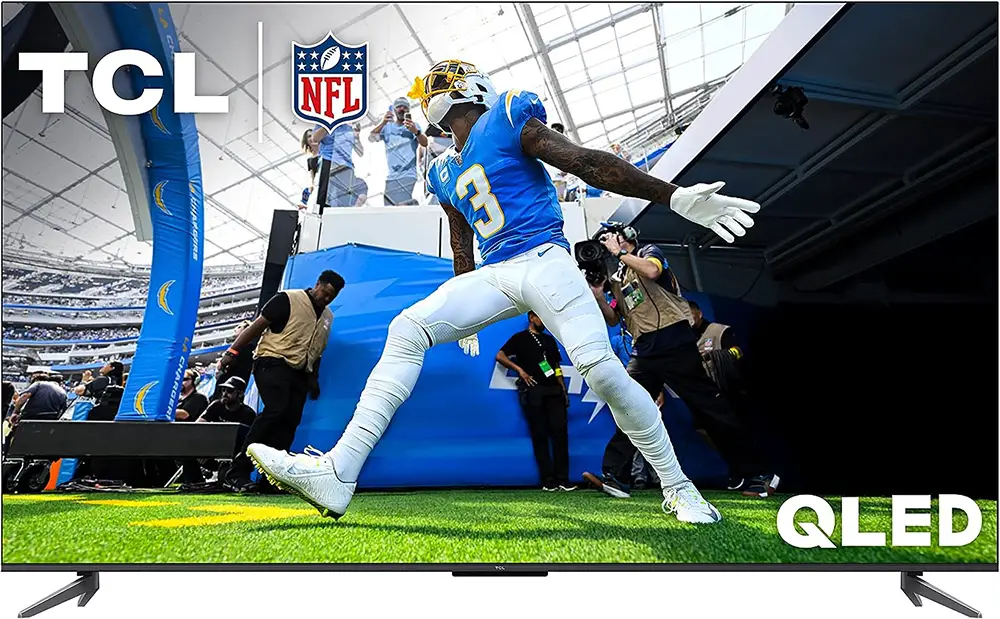
The TCL Q6/Q650G is the third release in line after the QM8 and the Q7/Q750G. It is still a QLED but obviously misses a lot of the advanced features its two bigger brothers have. As always the TCL Q6/Q650G is a US market only model as TCL in Europe and other markets use different model names. So we cannot be sure if there is a direct equivalent to the one we have for testing.
So let’s see real quick what you are getting in this one. The TV is using a Direct LED backlight system with no local dimming along with TCL’s AIPQ Engine and a 60Hz VA panel. Some of its features include Dolby Vision, HDR10+, FreeSync, G-Sync, Dolby Atmos, DTS Virtual: X, DTS pass-through and the latest Google TV.
Just from the specs above it is obvious where TCL had to cut some corners in order to bring its price to this incredibly low level. Can the Q6/Q650G still remain a competitive TV in this category? This is what we are about to find out.
Design
The Q6/Q650G’s design is relatively simple but if you take into account its cost then surely it will impress you.
Quality wise it is nothing extraordinary to brag about. It uses simple materials, with metal and plastic used for different parts of it. But TCL made sure to have a very presentable TV that surely is not showing its extreme budget nature.
Measurements
Thickness of the TV is about 3.25″ (8.3 cm) which is a bit on the high side, even for a Direct LED TV.
On the other hand its borders are very thin for its category as we measured them just 0.35″ (0.9 cm). This definitely helps to make the image a bit more immersive.
Back Side
Looking the TV form the back we find all ports on the left side looking sideways. The power connector is kept separately, as usual, on the right side. Unfortunately the way these ports are placed it is hard to reach them in case you attach the TV on a wall. They are very much towards the center requiring you to either try to reach them or you will have to move the tv every time to have sufficient space to work.
The TV doesn’t seem to have any special grooves for cable management. But TCL has added some plastic clips you can attach to the back for that reason. The electronics box is located in the middle of the back side and this is where the holes for the VESA wall mount are also found.
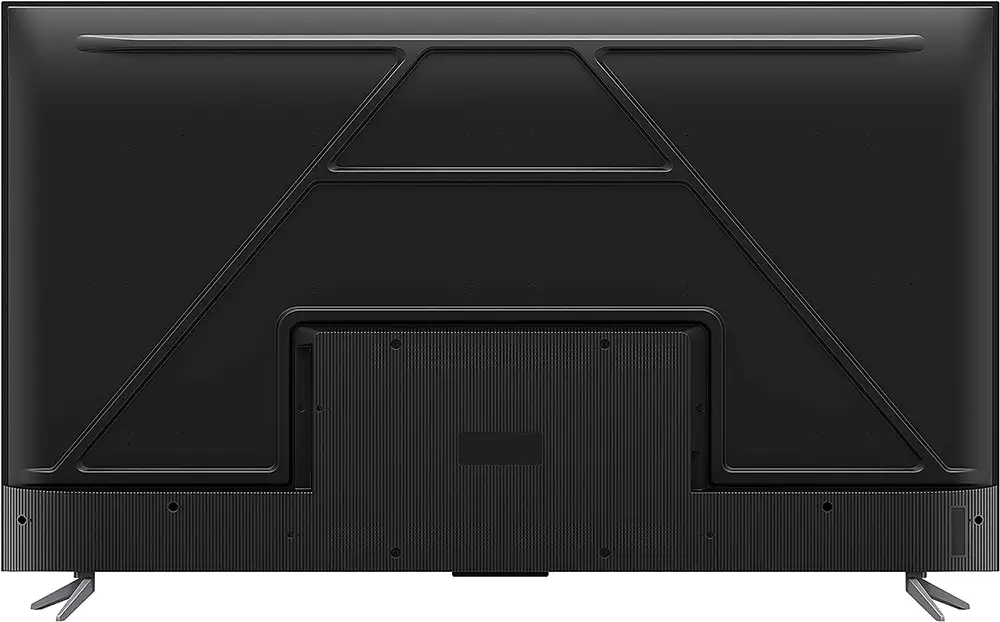
Stand
The design of the stand follows the fairly standard bench type that offers the TV more stability. But on the other hand you need a bigger furniture if you plan on placing it on one instead of the wall. The legs are made out of plastic which is not a surprise given the price. We did see some wobble but it was not so much to make us worry.
The good news is that the Q6/Q650G offers a second stand position as well. In that one you can place the legs closer to each other if you have a small furniture. The footprint of the legs in this second position is reduced to 28.7″.
Lastly the gap between the panel and the surface is around 2.5″ which may or may not suffice for some soundbars. And because this gap varies between the different sizes we suggest you always measure to be on the safe side.
Remote
As for the remote, this is the same one we saw in our TCL QM8 and TCL Q7/Q750G reviews, no differences whatsoever. Its button layout reminds us more of Sony’s rather than Samsung’s simpler approach.
As usual it comes with a built-in microphone to use with voice control functionality. And there are also six dedicated buttons for Netflix, Amazon Prime, Youtube, Apple TV, TCL Home and TCL channels.
One thing we definitely love in TCL’s remote is its motion sensing backlight. Sony is using the same feature in some of their remotes and we love to see TCL also implementing it in theirs.
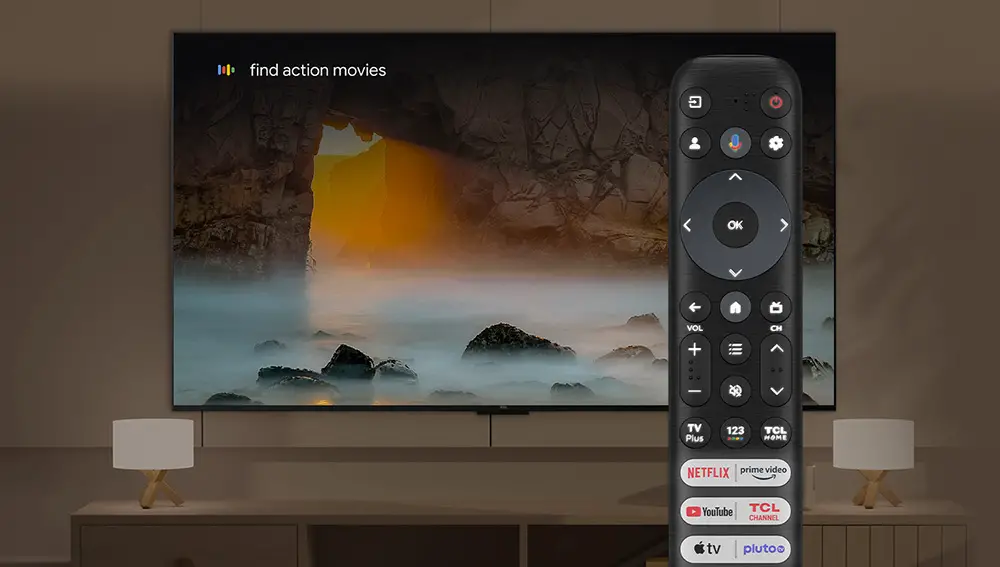
Video Quality
Processor technology used
As with all brands, TCL has its own proprietary processor they use in their own TVs. Called TCL AiPQ Engine, this chip is a step down from the AiPQ processors found in the Q7 and QM8 models.
There are no clear comparisons between these chips so we have no clear indication of their direct differences. But the processor in the Q6 is missing the “Deep Learning AI” claim so probably it has to do with reduction in its AI capabilities.
But this is all we know about this processor for 2023.
Resolution and Up-scaling
As always first comes our upscaling testing. We run a few videos in different resolutions ranging from ultra low quality ones, some 480p DVDs, some in 720p and obviously 1080p resolutions. We tried broadcasting signals, streaming content and discs to have a better, all around idea of the TV’s capabilities.
Both the QM8 and Q7 had problems upscaling low resolution content and it seems this problem is even greater with the Q6. The TV has major issues and the final upscaled image lose a lot of details. Since this is a problem in all the Q-series it definitely has to do with TCL’s up-scaling algorithms. The final image was barely acceptable. Even low budget TVs should do better here.
Low quality streaming content was also not very good. The TV didn’t do much to remove or smooth out macro-blocking but at least we didn’t lose much of the details that were there.

Audio Processing
Such a low end TV can do very basic things with audio. The Q6 does comes with various processing features including DTS Virtual: X among others. But we will talk more about its audio capabilities in our dedicated section below.
Lighting technology used
The Q6/Q650G uses a Direct LED backlight without local dimming functionality.
Direct LED Explained
The Direct LED backlight is using LED lights behind the panel but is much less capable than a FALD or a mini LED system. This means far less brightness output, less light accuracy and lower contrast. As a result blacks will appear more greyish than true blacks when some bright object appears.
This happens due to the omission of a local dimming feature. When a bright highlight is on screen the TV cannot increase the brightness of that specific area. It has to up the brightness of the entire screen. The result of this is that the whole image will look washed out and overbrighten.
Having a Direct LED system is pretty common the last few years in mostly the lower end, budget friendly categories. And is in line with what we have seen in many other TVs with low capabilities.
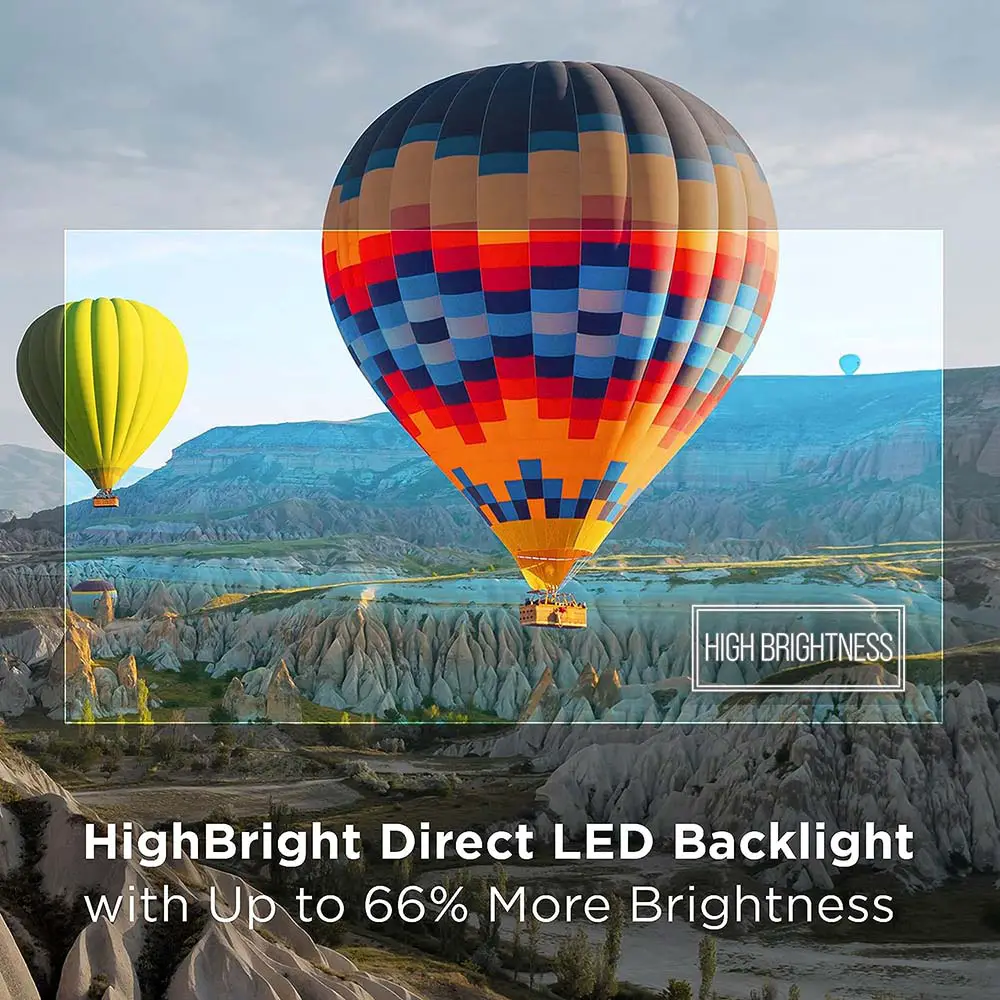
Number of Dimming Zones
With no local dimming available the Q6/Q650G does not use individual dimming zones.
Blooming & Zones Transitioning
The Direct LED backlight may be the weakest one available but for a low performing system it does have its own merits.
First of all the TV does not suffer from blooming. Since there are no dimming zones the Q6/Q650G cannot light specific parts of the screen. But the lack of blooming is replaced by an overall washed out picture instead.
When local dimming is available, the quality of a fast moving bright object on a dark background is bound by the algorithms performance. Certain test patterns, check the speed the individual zones will light up or turn off. If these changes happen late then various undesired effects like flickering or ghosting will appear.
This TV is not affected by these at all. And from our tests all objects would appear moving smoothly across the screen no matter their speed or size.
Brightness / Contrast
Next we have our brightness tests. We used the Movie mode because it was the most accurate one from those available for both SDR and HDR content.

SDR and HDR Measurements
First test is the SDR brightness over a 10% window and the number we got was 455 nits which is good enough. It may not be the brightest we have seen but the TV should be able to combat glare in a relatively bright room.
We then switched to HDR content and in our HDR brightness over a 10% window test we measured 482 nits. This is average for HDR content. Highlights do have some level of intensity but this is not as much as we would like to see in HDR content.
Automatic Brightness Limiter (ABL)
As with most TVs nowadays the Q6/Q650G comes with an Automatic Brightness Limiter (ABL). This system lowers the overall brightness of the screen when large parts of it become very bright for a long period of time.
The TV managed to maintain its brightness no matter how long a bright image displayed on screen. We didn’t notice any major changes in the brightness either it was SDR or HDR content. Keep in mind that this kind of ABL behavior is very common with low tier TVs.
In these cases the ABL is not so much necessary as the brightness output is far too low for the ABL to kick in. And this is the reason why we did not notice changes at all compared to TVs with very high brightness limits.
EOTF Tracking
The TV proved to be very accurate here. It followed the EOTF reference values very close. Near black levels were slightly brighter than they should. But this is a typical behavior in all TVs that lack a local dimming feature. The TV has a sharp roll off at the top which result in certain loss of detail.

Contrast Performance
As the Q6/Q650G comes with a VA this means that native contrast is very good. This is typical for all VA equipped TVs. As a result blacks are deep in dim lit scenes.
Unfortunately missing a local dimming feature means that contrast cannot further improve and it has problems when a bright object appears on a dark background as the whole screen will look washed out.
Viewing angles
Using a VA panel may help with the TV’s native contrast but this has a nasty downside. Its viewing angles are bad. VA panels in general have trouble with this so it’s not a problem of the Q6/Q650G in particular. Some manufacturers tend to use extra layers in order to improve this problem but this TV is not using any such technology.
As such the best angle we could measure on the Q6/Q650G was around 20 to 25 degrees at the most. This is a clear downgrade over other, IPS equipped, TVs. Anything more and the image quality degrades a lot. Therefore this TV is not as family friendly as we would like it to be.
The TV uses a semi-gloss coating in order to combat light reflections. Its performance is decent but not the best we have seen overall.
Since what is acceptable image quality is very much a personal matter, and considering all the above, we would suggest you to try it out in a local store in order to be sure if it is acceptable by your standards or not.
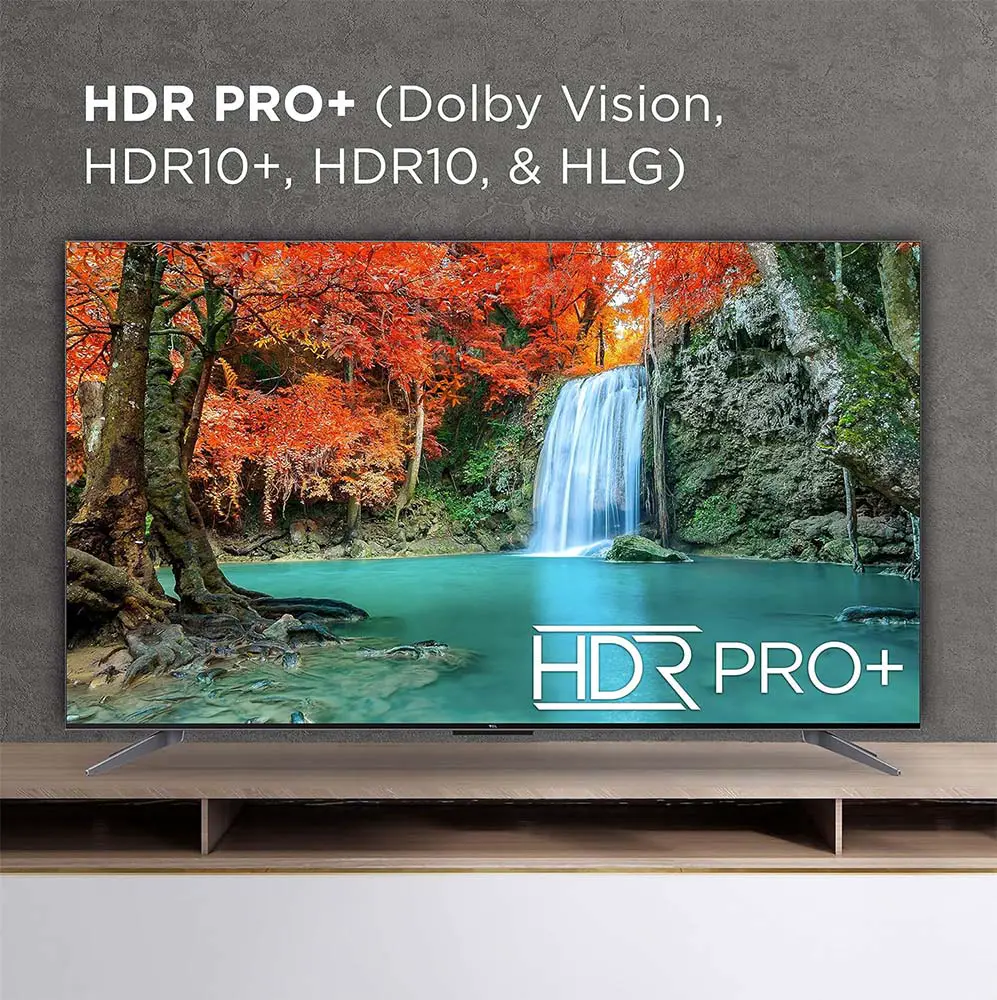
HDR support
With the current HDR situation you really have to choose which camp you want to follow as not many brands support all available ones. It’s either Samsung’s HDR10+ or Dolby Vision that Sony and LG support.
And this is really a shame as we don’t get the chance to choose all of them at any time. Thankfully some brands, including TCL and Hisense, are not bound to any specific camp and instead went ahead and added everything in their TVs.
As such the Q6 supports not only the basic HDR10 but also HLG which is used for streaming content. And we also get HDR10+ and Dolby Vision which use dynamic metadata for much better and accurate images.
Unfortunately the Q6/Q650G is missing Dolby Vision IQ that we saw in the TCL Q7. But for such a cheap TV even having Dolby Vision is a major one.
Color coverage
The Q6, being in essence a QLED, uses a special Quantum Dot layer. With this the TV is able to display more vivid and lifelike colors. We have seen promotional material claiming 100% coverage of the DCI-P3 color space when this layer is used but reality could not be more far from the truth.
And you should never take these numbers literally as they are mostly used for marketing purposes. Real numbers usually deviate a lot from these claims.
In our case we measured the TV to have about 91% coverage of the DCI-P3 color space which is very good for this price category. On the wider REC.2020 color space we got a coverage of 68% which is again amazing, considering how much you pay for this TV.

DeltaE Errors
The TV proved to have very poor out of the box performance unfortunately. Certain colors appeared to have DeltaE errors way above the maximum limit of thee. White balance was a mess while gamma was way above its target. Only color temperature measured accurate enough.
After some thorough calibration we managed to bring the TV to very respectable levels with really good accuracy. White balance was massively improved and gamma came closer to its 2.2 target value. We also managed to bring most colors under the maximum DeltaE level of three.
Not every color was perfect after calibration. But considering how bad it was with its default settings we can say that after spending time with it the TV was accurate enough.
If you are a casual user that hates calibration then you will definitely be missing a lot with the Q6. But if you decide to dedicate some time and effort for a correct calibration the TV will reward you with its really good accuracy.
Color Gradients
Color gradients were acceptable but we noticed some major banding, mostly with dark gray shades. There is also banding with most other dark shades like green and red but it was not so severe as with grey ones. With real world content things looked better obviously but banding was still somewhat noticeable.
There is also a Noise Reduction function in case you want to eradicate banding completely. But if you enable it some detail is lost and in general we don’t like using this feature much.

Panel Uniformity
Panel uniformity was average. Gray uniformity tests revealed some vignetting, which is slightly darker corners than the middle of the screen. We also noticed some dirty screen effect towards the center but it was too subtle to be considered bothering.
The black uniformity test was almost perfect. Unfortunately the whole screen looks washed out if a bright object is on screen. The lack of a local dimming feature is very much responsible for this. But even without a bright highlight the entire screen was slightly brighten.
We also noticed some minor backlight bleed on the lower part of the screen. But it was not very much to be distracting.
Motion performance
Next we have our motion performance tests. The Q6 comes with a 60Hz panel which is pretty standard for such a low tier TV. What is interesting is that the Q6, just like the Q7 and QM8, can do double the native refresh rate of its panel. This means the Q6 can go up to 120Hz.
But there is a catch to this. In order for the Q6 to achieve such a high refresh rate it has to lower the image resolution to 1080p or 1440p. But even with this limitation having this unique feature is definitely a great one.
Without the use of any motion interpolation the Q6 did good, but surely it can’t keep up the same level of performance as its bigger brothers. The TV has good response times but not the best. As such some stutter was visible. The TV was also good at removing judder from low frame rate content. But with 60Hz content it had trouble doing the same.

Motion Interpolation
The TV comes with a standard motion interpolation feature. This is a feature that smooths motion and removes blur and judder from fast camera movements. Motion interpolation on the Q6 was good but not great.
With slow paced scenes and camera pans the TV could cope with the processing needed. But when things got hectic the Q6 just couldn’t keep up. As a result we could see some major artifacts appearing when the camera would make very fast moves.
Also be careful because very aggressive settings will make the “Soap Opera Effect” to appear. Motion Interpolation can be enabled from the Motion menu. You have to enable the Motion clarity settings and adjust the Judder Reduction slider.
Black Frame Insertion (BFI)
The TV is missing a Black Frame Insertion feature. So the standard motion interpolation is your only option if you really want to have smooth motion.
Overall Motion Impressions
For a TV of this price the Q6 is not bad at all. Obviously its motion capabilities are rather limited but for what is there, we can call it pretty satisfactory in this budget range. And certainly in line with some other, much more expensive models.

Input lag Measurements
The TV’s input lag is next in the list.
According to our measurements the Q6 measured an average of 10.6ms input lag in 1080p, 1440p and 4K resolutions at 60Hz. Very good numbers, as we expected. For 120Hz the TV can do only 1080p and 1440p and in these resolutions we got 6.6ms.
Obviously you are going to get such low numbers only if you use the available Game mode. As outside that the input lag will increase to around 94.5ms. This is a bit too high to be used even in slow paced offline games.
Other Gaming Features
The TV also comes with Auto Low Latency Mode (ALLM). This can be used with any devices that support that like the PS5 and Xbox consoles and can greatly benefit users.
Unfortunately, as with all Hisense TVs there is no HGiG mode.
We also need to mention that the Q6/Q650G does not support 144Hz as even with 120Hz it is resolution limited to only 1080p and 1440p.
And here we found a small problem. With PS5 you will have no problems at all as it allows 1080p@120Hz with HDR. The Xbox on the other hand does not. If you play a HDR game it will default to 4K resolution, and as a result will fall back to 60Hz. We do not know why Microsoft does not support that but it is what it is. And you should be aware of this small Xbox limitation.
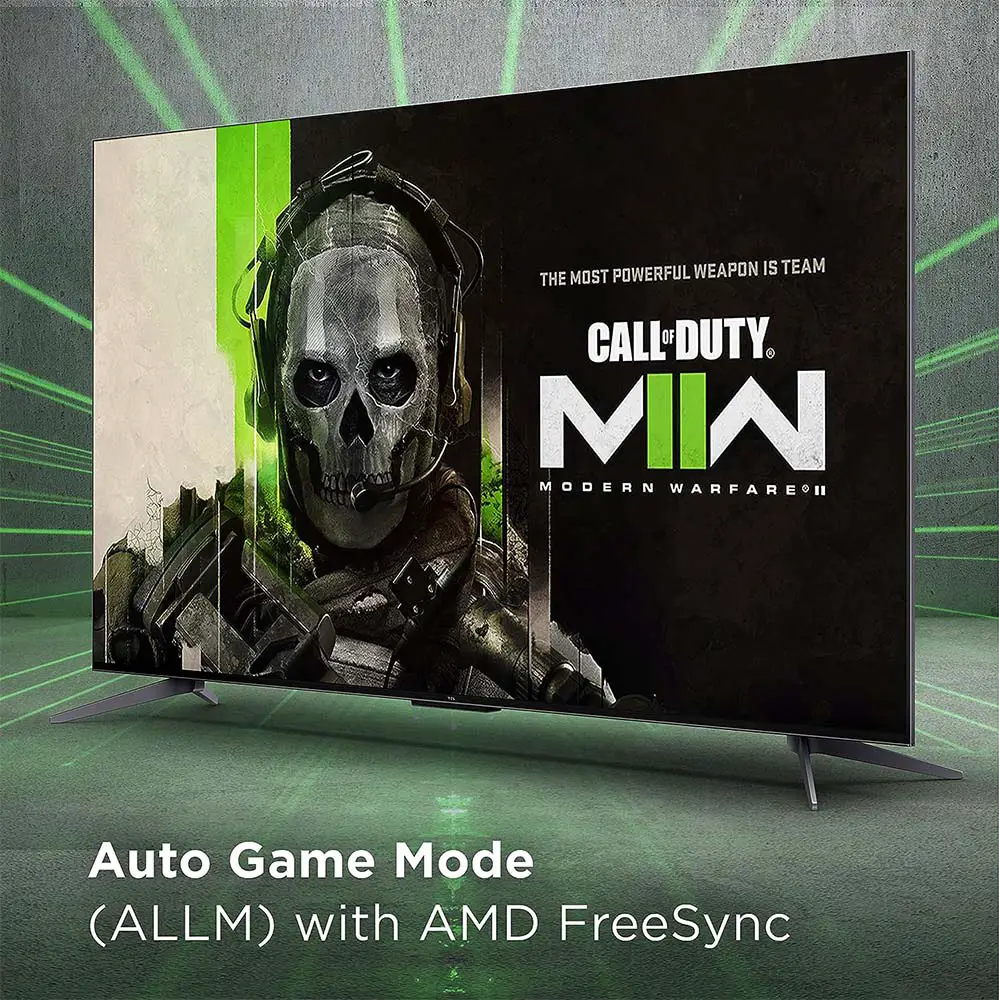
VRR Support
The Q6 supports all VRR options. As such we find HDMI Forum VRR, AMD FreeSync and NVIDIA G-Sync.
For 4K resolution it seems that VRR is rather limited in the 48Hz-60Hz range. On the other hand in 1080p and 1440p resolutions this range is much wider as VRR can get down from the 20Hz range all the way to 120Hz. So in case 4K is not extremely important to you, you will definitely find a lot of benefits gaming at a 1080p resolution rather than 4K.
Trying Out a Few Games
For our real world testing we connected both our PS5 and Xbox series X to one of the HDMI ports of the Q6/Q650G. The games we try out lately are F1 2022 and Dead Space, both in 4K@60Hz mode as the TV cannot do anything more than that. For F1 2022 we also tried 1080p@120Hz to see how it looked.
For 4K@60Hz things were as good as you would expect them to be. Both games had excellent reactions to our commands and everything was smooth and fast without any visible delays.
With F1 2022 at 1080p@120Hz our experience was even better but at the cost of some visual fidelity. At 1080p the image was not as crisp and some details would get lost. But with such a fast moving game this was not so bad and certainly the last thing you are going to do is stop to admire the view. So if you are not bothered to lose some image details then 1080p@120Hz is not a bad option to consider.

Overall Image Quality Impressions
As we say a lot of times in our reviews when it comes to low cost TVs you cannot harshly judge them for their image quality. For a TV that costs $399 (for the 55″) there are some major limitations you must be ready to accept.
But even with these limitations the TCL Q6/Q650G proved to be a very capable TV, all things considered. Its brightness was ok for such a backlight used. Its contrast was good, there is no blooming and its color coverage was above average. Input lag was great while it comes with plenty of gaming features. Lastly add Dolby Vision and HDR10+ which is a rare thing in this price.
On the other hand the TV is missing a local dimming feature which means that its screen looks washed out when a bright highlight appears on a dark background. Viewing angles are bad, its out of the box performance was not very good and its motion capabilities are rather limited.
Audio Quality
All these low cost TVs use very basic audio systems and the Q6 is no different. So don’t expect anything extraordinary out of this one.
Audio System – Channels & Power Rating
The TV uses a 2.0 channels configuration with 20 watts of power output in a 2 x 10 watts configuration.
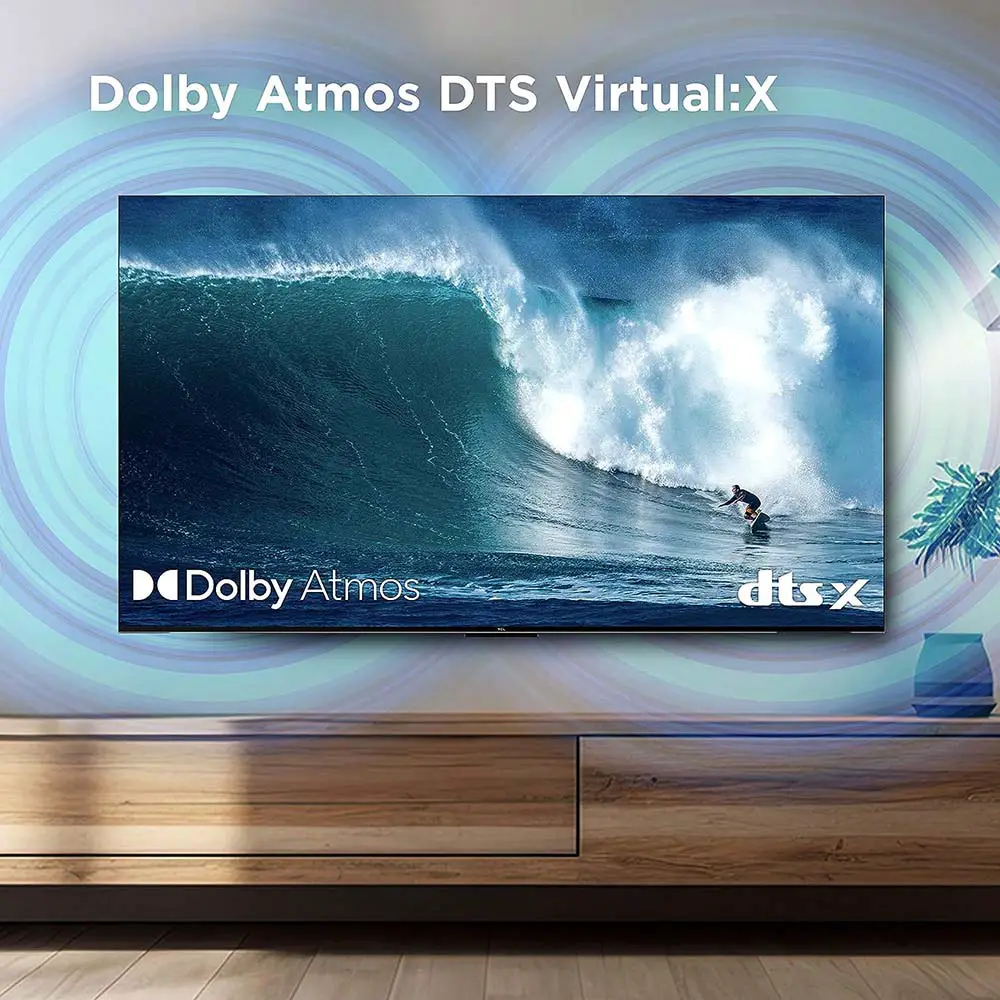
Audio Formats Support
The TV can decode Dolby Atmos and Dolby Digital+ but this is mostly for promotional purposes as the TV cannot create a real surround experience with such a basic audio system. If you want to get the most out of it then you will certainly need a dedicated surround system or at least a good performing Dolby Atmos soundbar.
Dolby Atmos can be passed-through eARC to some Dolby Atmos capable system or soundbar. As for DTS things are rather limited. There is no native DTS decoding support. And unfortunately the TV cannot pass-through DTS:X through its eARC port. DTS pass-through is the only one supported and for this you can use either ARC or the optical port.
Audio Features
The Q6 does comes with virtual tech for the sound in the form of DTS Virtual: X. This aims at giving sound a more three dimensional feel for higher immersion. The result obviously is not as good as you may hope for.
The TV cannot really create an enveloping atmosphere. With DTS Virtual: X sound feels over-processed and unnatural. But in the end it is the content that defies its performance. In some instances you may feel more satisfying sound with slight positional audio. But these instances are few and far between. And in the end the TV always reminds you of its limitations.
Overall Audio Performance Impressions
Not much to say here as the Q6 behaved similar to many other low cost TVs in this category. Its sound is mostly good for casual use. Don’t expect to get any kind of cinematic immersion out of it, even with DTS Virtual: X. The TV simply lacks the hardware for anything more.
All audio is firmly fixed at the front. There is no surround activity and no overhead action. The TV lacks any kind of expansion and depth and everything sounds flat and uninspiring. Bass is also on the weak side which makes movies less immersive.
But if you are not so much obsessive with sound the Q6 is not bad. Dialog is distinct enough and the volume can go up high enough. Although when you push it compression will become obvious.
Overall the audio will suffice without going above or beyond what is possible in these low cost TVs. Which is exactly what we were expecting to hear.
Ports and Connectivity
All ports of the Q6 are located on the left side looking sideways. As always the power connector is the only port that we find on the right side.
Looking at all the ports from top to bottom we get the following. A USB 3.0, an Ethernet port for wired connection to your local network, three HDMI ports, the cable/antenna port, a special jack for composite video with stereo audio input, a headphones input and a digital optical audio output.
HDMI Specifications
The Q6 comes only with HDMI 2.0 ports. This means that the TV is stripped of some advanced features.
But nevertheless we do get ALLM, limited VRR support, G-Sync, FreeSync, ARC, eARC, Dolby Vision, HDR10+ and HFR. For HFR the TV can only do 1080p@120Hz and 1440p@120Hz. For 4K resolution 60Hz is the maximum.
Connectivity Observations
Again, the Ethernet port is still the usual 100Mbps one. But this does not surprise us, as even flagship TVs in 2023 have not upgraded to Gbit speeds yet.
Streaming requirements and internet connections have greatly advanced the last few years. This made the 100Mbps limit obsolete a while back. And while most TVs update their WiFi capabilities (some models even support WiFi6 this year) the Ethernet adapters are still the same.
Its tuner supports only the older ATSC 1.0 while the USB port surprisingly is the newer 3.0 version.
Wireless Capabilities
When it comes to its wireless capabilities the TCL Q6/Q650G supports WiFi5 (802.11ac) along with Bluetooth.
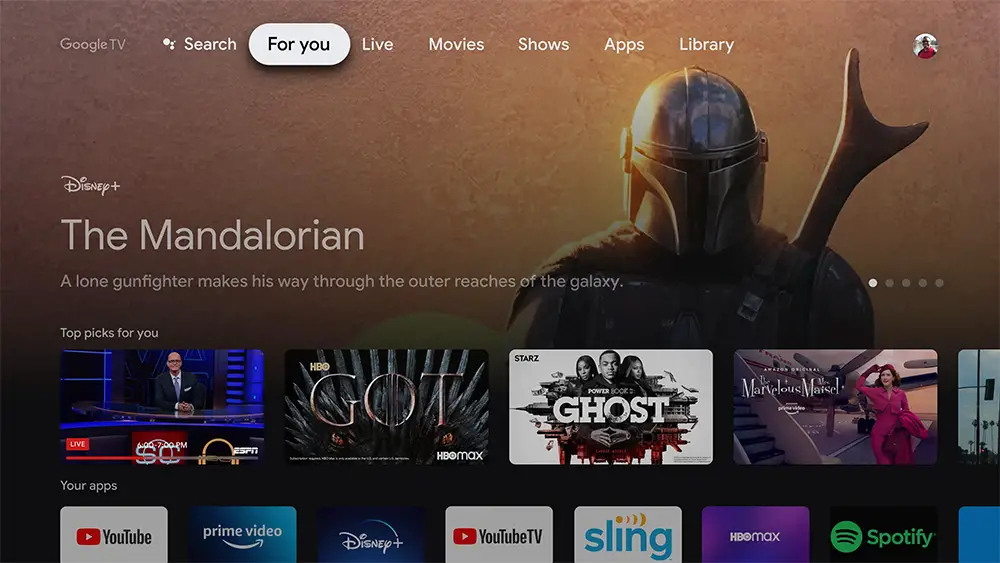
OS, Apps and Features
The Q6 comes with Google TV which is version 11.0. The last versions of Google TV do not have major differences between them and they keep their overall layout unchanged.
Google TV 11.0
Google has done a poor job at making clear of the differences between Google TV and Android TV that is still being used from some TV brands.
To make things real simple Google TV is still Android TV but with an extra layer on top of it. Think of it like how it works with Android smartphones. Most manufacturers that use Android in their releases they use on top of that their own layer that gives this extra something to their UI that make them unique both in appearance and functionality.
The same is with Google TV. You still basically use Android TV but there is the extra Google TV layer on top in order to make the UI feel different both in looks and functionality.
Google TV seems to have been designed around recommendations, either it be movies, TV shows or applications and this seems to be the main focus of all the latest OS in general. During setup the wizard asks you of what specific streaming services you use in order to customize the Home screen recommendations.
Keep in mind that Google TV is still Android at its core even though it looks different from Android TV. But with Google TV things seem more fluent, more direct and more easy to navigate around.
Google TV 11.0 offered us the exact same experience as in TCL’s other 2023 releases. Navigation was really good and we didn’t notice any major slowdown during opening or closing various apps and programs. Overall a very good user experience here.
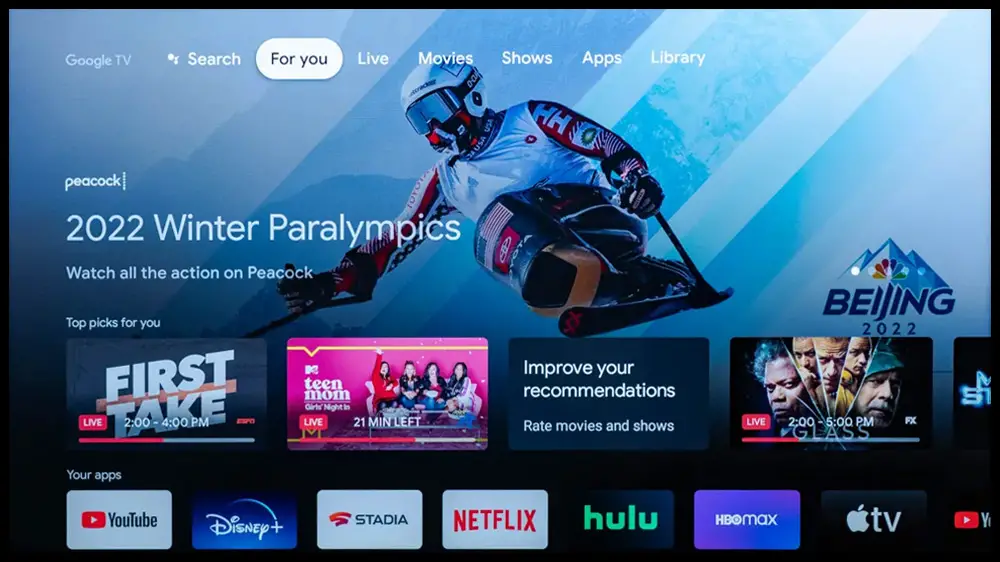
Streaming Capabilities
If there is one thing that Google TV has in abundance that is huge app support. Through the included Google Play Store you can find literally thousands of apps that you can download and use. Except from the pre-installed ones of course. There is so much content available that you will hardly miss anything.
All the big names are obviously present like Google TV, Disney+, Netflix, Amazon Video, Hulu, HBO Max, Apple TV and Youtube. There is also Pandora, Tidal, Google Play Music, Spotify and iHeartRadio to name a few.
As always some of them are region dependent so make sure the ones you are interested in are working in your area. Lastly many apps like Netflix and Youtube support playback for both 4K and HDR content for those interested in it. But since each app is different we cannot say which apps support what resolutions and HDR formats in various regions.
Various Connectivity Features
The TV comes with support for both Chromecast and Airplay 2. This means that no matter what mobile device you have you can stream content from it to the TV itself. This works for either Android or Apple devices.
Voice Control
And since we are talking about a smart TV, voice control is a given. The Q6 works not only with Amazon Alexa but also Google Assistant.
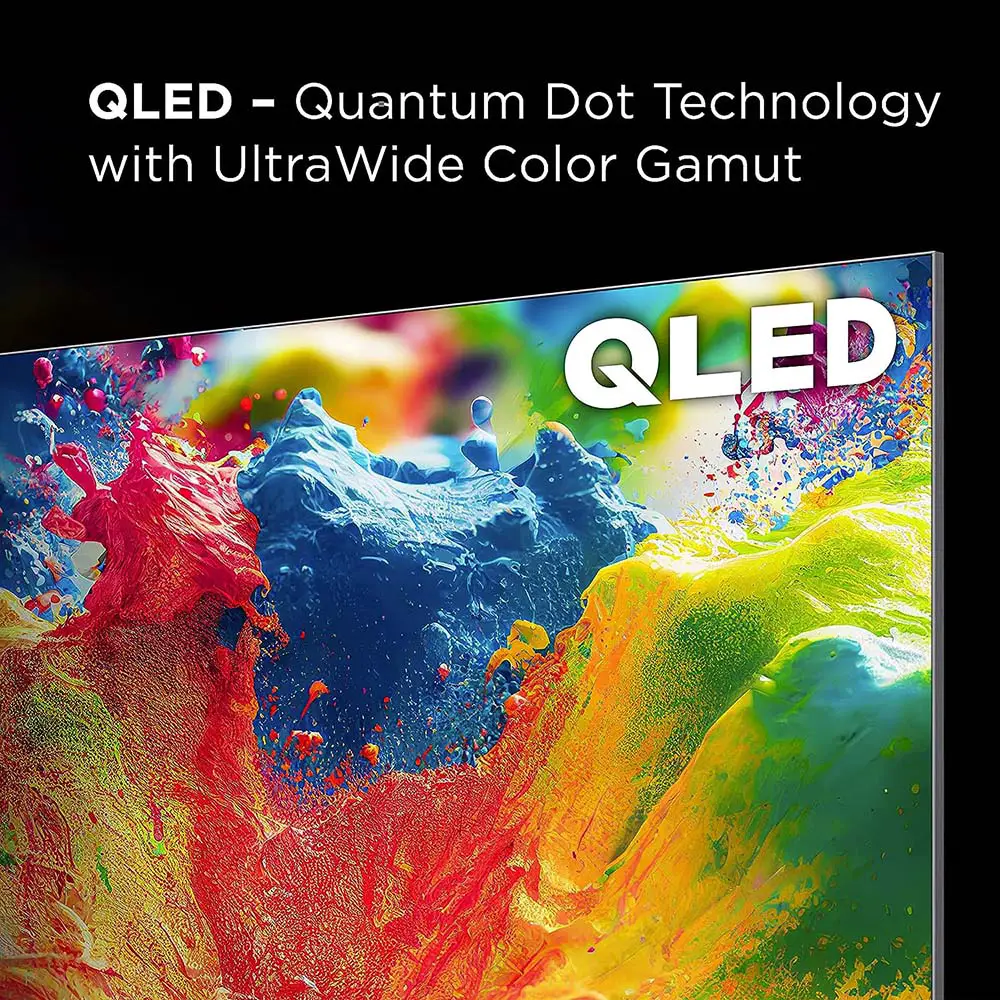
Compared to other TVs
Let’s do some comparisons now. And the first TV we will compare it with is the 2023 Hisense A65K which is priced slightly lower than the Q6. Both TVs proved to be very similar in many categories while they do have some differences worth noting. On the one hand the TCL Q6 is slightly brighter and has better gaming features as it supports 1080p and 1440p at 120Hz. On the other hand the Hisense A65K is a bit more accurate out of the box. So it depends what you want the most.
Next in line we have the 2023 LG UR8000. The Q6 is brighter here, has better color coverage and supports Dolby Vision. It also comes with better HDMI specifications like VRR which the LG misses completely. The UR8000 performs better without any calibration but given the many advantages of the Q6 we would go for that one.
Another TV in the $399 price range is the 2023 Samsung CU7000. The Samsung is on the same boat as the LG UR8000 but slightly worse. And this because its out of the box performance was not so good. The Q6 again is brighter, supports both Dolby Vision and HDR10+ and comes with plenty of HDMI features like VRR. The Q6 is the clear winner here.
Last comparison is the 2023 Sony X77L. Keep in mind that with a price tag of $549 the Sony is much more expensive than the TCL Q6/Q650G. But even so the Q6 proved to be brighter, has better contrast, supports Dolby Vision and comes with certain gaming features like VRR and 1080p@120Hz support. On the other hand the Sony has slightly better processing, wider viewing angles and better out of the box accuracy.
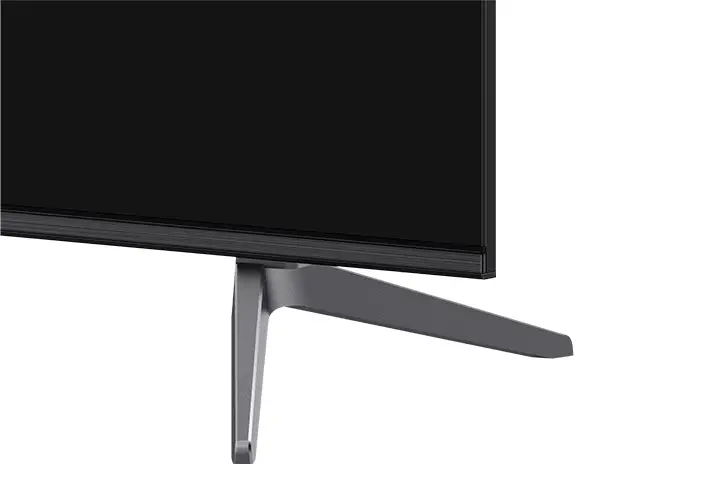
Final Thoughts
As you can see from the above comparison section there is plenty of competition in the lower tier categories. With the harsh economy nowadays consumers are looking for cheap alternatives and there is a huge market for such TVs out there. And brands do know about it.
The TCL Q6/Q650G is definitely a serious contender for the best low cost TV here. It has good brightness, nice contrast, supports both Dolby Vision and HDR10+, its color coverage is commendable, it comes with low input lag and supports plenty of gaming features like 1080p@120Hz and VRR.
On the other hand such a low cost TV could not be without some major problems. Missing a local dimming feature means that the screen look washed out when a bright object appears against a dark background. Viewing angles are bad, out of the box performance was not good and motion interpolation had problems. Its audio capabilities are rather limited and in general it misses a lot of advanced features.
But even with all these problems, the TCL Q6/Q650G is definitely the best performing TV in this low cost category. If you are looking for a new TV in this price range there is nothing better to go for. TCL has a winner in their hands.
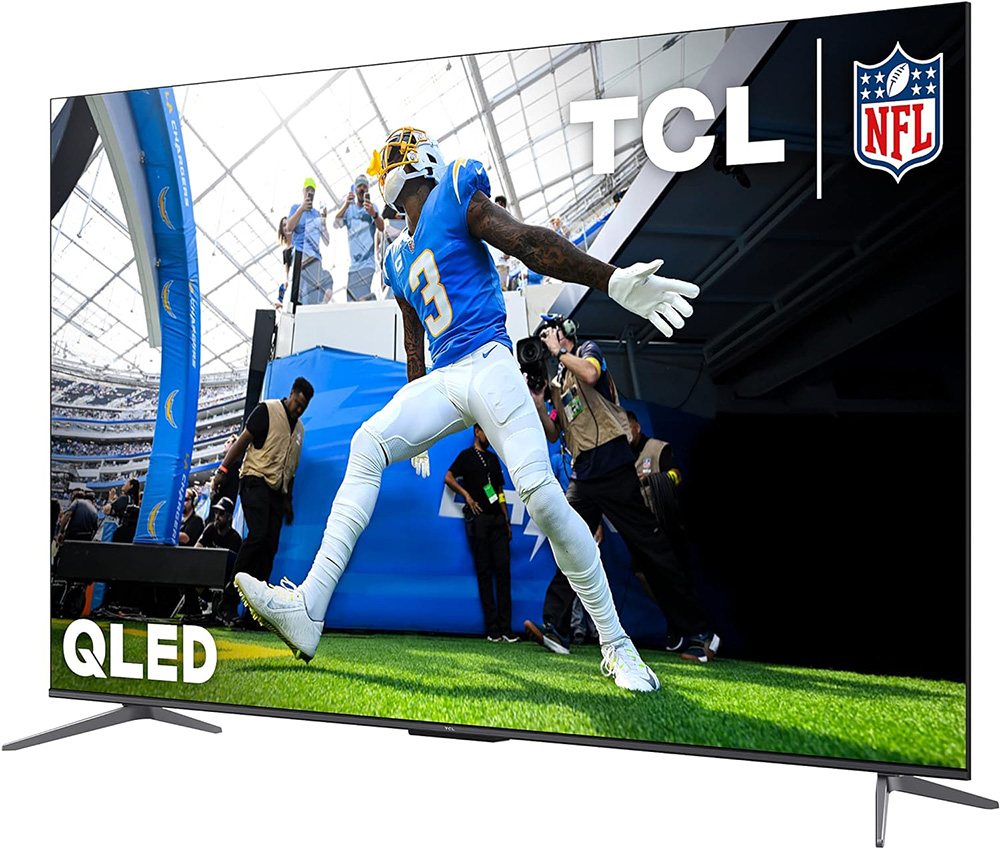
For more reviews you can check our dedicated 4K LED LCD TV reviews list or even look at our Product Reviews Table where you can find the brand and specific product you are looking for.
Cheapest Places to Buy :
*We are a reader-supported website. When you buy through links on our site, we may earn a small affiliate commission at no extra cost to you. Home Media Entertainment does not accept money for reviews.*





Thanks for the review of this TCL model I’m considering to buy. However while I’m not so concern about the image quality, I do look for something with better audio capability. You see I’m an audiophile and a lot of times I watch MTVs and concerts and it will be good if I don’t have to connect it to my expensive audio system for the superior sound when I just want to watch a “quickie” music video or two before I sleep. I’m not sure if you have more information about how it sounds but I know it’s hard to explain using words and that I still need to audition it in the stores. I will go out and do it this week but truly thanks for writing this review and giving me so much info about this TV.
Hey there. Well, in that case it is better if you test it for yourself. Because it is not possible for me to know what you consider good sound. But to be honest you shouldn’t expect any spectacular out of it.
Nice one, Stratos! I love your comparison section. It is definitely one of the most helpful parts of the whole article as it can give me an idea of how the Q6 does in comparison to other brands. I am looking at the Q6 for some weeks now and until now I was not ready to go for it. I have read that TCL TVs have many bugs in comparison to LG, Samsung and Sony. Is this true? And to what extent to expect them?
Hello Nikolay. Indeed TCL TVs do have certain bugs that you will not find in the other three big brands. But so far we haven’t experience any major bugs that didn’t allow us to enjoy their releases. But let’s say it is the price you pay for their lower cost. Personally I would have no trouble going for a TCL model after everything I have seen.